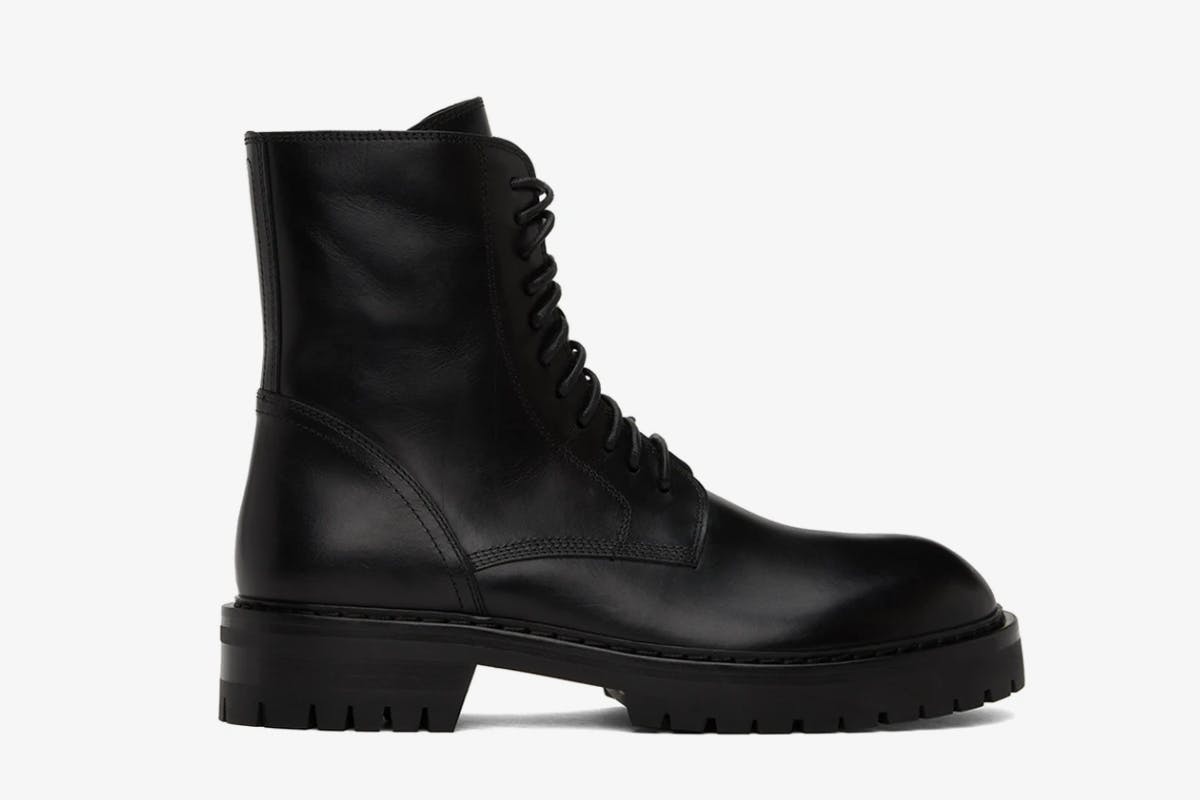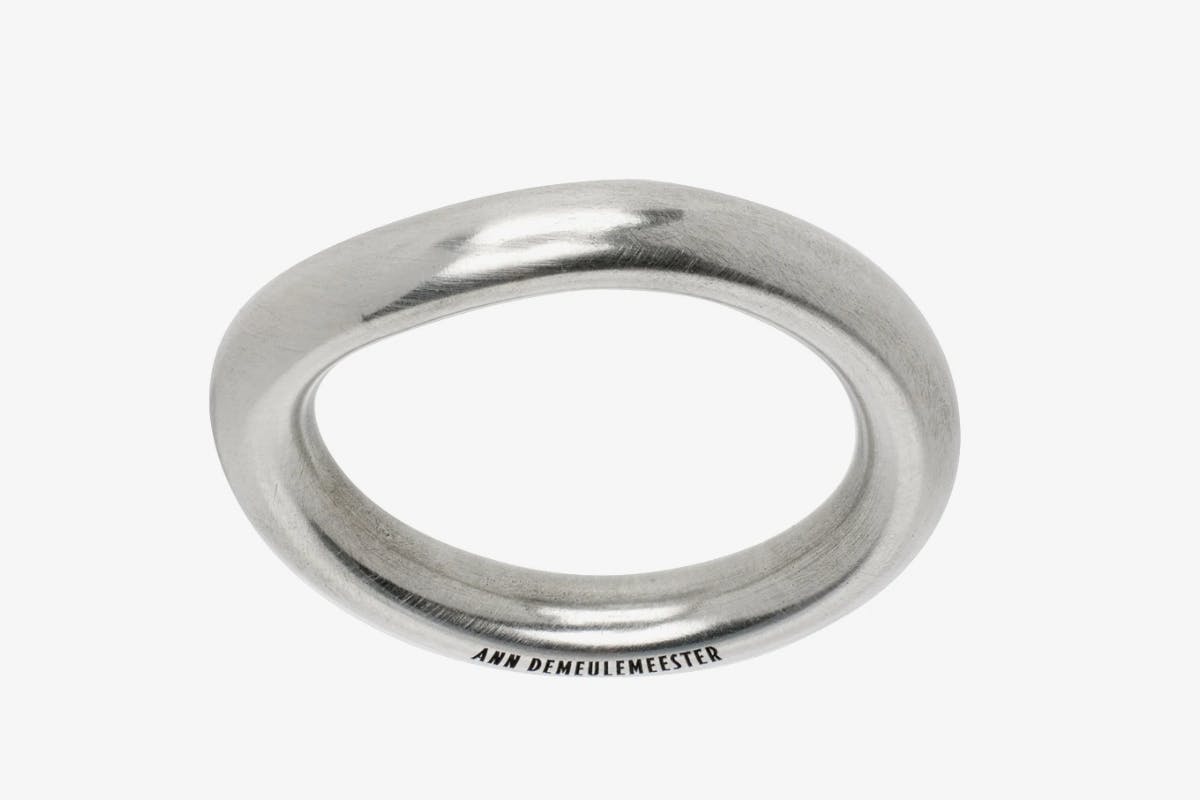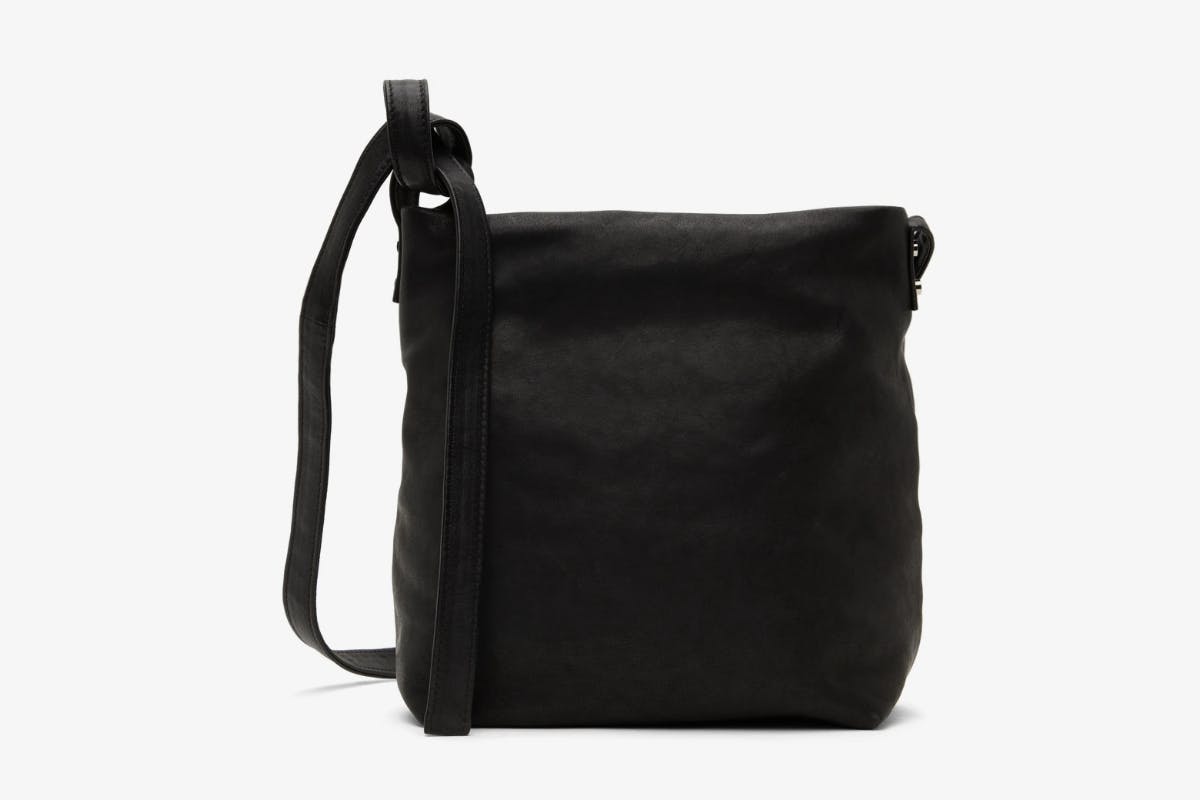How Belgian Fashion Changed the Style World Forever
Late last year, Belgian designer Raf Simons announced the closure of his eponymous brand, which has for decades been synonymous with youth culture and fashion’s avant-garde. Less than two weeks later, Ludovic de Saint Sernin, the buzzy Paris-based designer, was appointed to lead the storied Belgian house of Ann Demeulemeester. The news rejuvenated interest in the brand that once rocked Paris catwalks with its poet-warrior look but had lost its footing since Demeulemeester herself retired.
Both announcements were turning points in the much larger Cinderella story of the small European country that has produced a stunning number of creative contributions to fashion history. From OGs like Martin Margiela and Dries Van Noten to Simons and his disciples Pieter Mulier and Matthieu Blazy (who now head Alaïa and Bottega Veneta, respectively) as well as recent graduates like Marine Serre, for decades Belgium has continued to produce top-notch talent. How and why did this happen?
The Antwerp Six
In 1986, a group of six young fashion designers based in Antwerp loaded up a van with their designs and headed to a London fashion fair. It was the first time they had presented their work to an international audience. With virtually no money, and just one model between them, the first day was a disaster. Not wanting to spring for the most expensive booths, they ended up on the fair’s second floor among the bridalwear, and not, as they had hoped, next to Vivienne Westwood and John Galliano.
On the second day, they made stenciled fliers that read “Come and see the six Belgian designers” and began handing them out at the fair’s entrance. It worked. Barneys, the trailblazing New York department store, put in an order with each designer that would introduce them to the American market. The journalists — whose first question was, “You are from where?” — struggled with the designers’ Flemish names. One of the party blurted out: “Just call us the Antwerp Six.”
Word soon spread about this group of characters and their unconventional work. None of it made sense. To cosmopolitan European eyes, Belgium, unfairly, seemed like a cultural backwater. The Flemish names of the six designers — Dries Van Noten, Ann Demeulemeester, Walter Van Beirendonck, Dirk Bikkembergs, Dirk Van Saene, and Marina Yee — sounded weird. But one thing was clear: A new phenomenon had been born.
There was little that united the six designers in terms of style, but there was a sense of youthful energy and a capacity for rethinking fashion — what it represented and whom it was for — that united the group. Until the mid 1970s, high fashion was the exclusive domain of the rich, but with the rise of Malcolm McLaren and Vivienne Westwood in London, and the subsequent adaptation of Pop Art imperatives in Paris by Jean Paul Gaultier, Claude Montana, and Thierry Mugler, the old, staid world was beginning to change.
Shop Ann Demeulemeester here
According to Geert Bruloot, co-founder of two iconic Antwerp shops, Coccodrillo and Louis, it was the success of Yohji Yamamoto and COMME des GARÇONS that really gave the six their inspiration. “The Japanese showed everyone, for the first time, that fashion did not have to be about glamour,” Bruloot says. Yamamoto and CdG showed their first collections in Paris in 1981 to equal parts acclaim and disdain from the Parisian fashion press. “They had no podiums, they showed in sparse white spaces, they did not have huge budgets for shows. And yet they showed the world that great fashion does not have to come from Paris or Milan.”
There were other factors that gave the Antwerp Six their daring to make the kind of fashion they wanted. The synergy of youth culture and fashion that the Belgians have come to be known for was in its nascent stage, but the changes were happening swiftly. The center of change was London, which is why the six ended up there first.
Antwerp is a city with a small-town feel, where everyone seems to know each other, but it punches way above its weight when it comes to culture. It is centrally located, and its youth could easily travel by train to London, Paris, or Amsterdam for inspiration. What’s more, it is a relatively inexpensive and comfortable place to live, which is why most of the designers who graduated from the fashion department of the Royal Academy of Fine Arts, the ground zero of Belgian fashion, tended to stick around.
Another big factor was that, unlike France, Italy, or England, Belgium did not have a big fashion tradition. They were free to make what they wanted, how they wanted. At the same time, despite having no couture heritage to speak of, there was a clothing manufacturing base in Belgium that had realized it was falling behind its European neighbors. In 1981, the year three of the Antwerp Six graduated, a Belgian textile association was born, which instituted an award for Belgian fashion called the Golden Spindle. Ann Demeulemeester won the first competition, with the rest of the Antwerp Six as runners-up.
Misunderstandings and arguments between the young avant-gardists and the conservative industrialists about how clothes are supposed to be made were not uncommon. “The [textile] manufacturers here thought I was crazy,” said Van Noten of his first collection. Nevertheless, the designers’ modern take on fashion arrived and has proved unstoppable ever since. A year after their first outing in London, the fashion press was already talking about “the Antwerp Six,” with fashion journalists from The New York Times to i-D traveling to Antwerp to investigate the scene.
Despite the love the Belgians had for London, the British Fashion Council refused to grant the six space on their fashion week calendar, so they turned their sights on Paris. Bikkembergs held his first Paris show in 1989; Van Noten and Demeulemeester in 1991. Bikkembergs’ unapologetically masculine chunky knitwear and hard-nosed shoes became de rigueur for the menswear cognoscenti, and Van Beirendonck’s brand of outrageous youthful eccentricity was highly desirable club gear. In 1992, a survey of international boutique owners proclaimed that Ann Demeulemeester was the second-most popular brand in the world, bested only by Jean Paul Gaultier. By the mid ’90s, the Antwerp Six were holding the hottest shows in Paris, ushering in the golden era of the avant-garde, or as one French documentary called it, “anti-fashion.”
Maison Margiela
One designer conspicuously absent from the foundation myth of Belgian fashion is Martin Margiela. Though he is often erroneously named as one of the Antwerp Six, the designer made his way alone. After graduating from the Royal Academy of Fine Arts in 1980, unlike the Antwerp Six, he did not stick around. His lifelong dream, after seeing the futuristic creations of the French designer André Courrèges on TV as a child, was to be a fashion designer in Paris. By 1984, Margiela had secured an assistant designer position with Jean Paul Gaultier, who, as the anointed enfant terrible of French fashion, was rocking Paris’ catwalks with his camp extravaganzas.
Margiela assisted Gaultier for three years while developing his own designs on the side. In 1987, Margiela left Gaultier and the following year founded Maison Martin Margiela with his business partner Jenny Meirens, who owned a boutique in Brussels. In the fall of 1988, the house held its first show in Paris. The elongated, deconstructed DIY vibe of the garments, paired with tabi shoes, were unlike anything seen before in mainstream fashion. In a review of his next collection, i-D decreed, “Martin Margiela, a relatively unknown Belgian designer, produced the most exciting show of the Paris season.” Margiela himself did not expect such a furor, deeming the enthusiastic response “an over-reaction.”
Margiela declared that the age of the superstar designer was over. He wanted his line to be about the clothes and not the designer. Though he named his company “Maison” in an homage to the iconic haute couture Parisian houses, he maintained it was the collective that was responsible for the creative effort. He would not be singled out by the media.
To underscore this self-effacement further, Margiela created an all-white label for his garments. The four stitches protruding from the back of each piece hinted that the wearer was to cut the label off after purchase. Most people didn’t, and so against his will, Margiela pioneered the logo-without-a-logo approach to branding. At the same time, his obsession with deconstruction — exposing the elements that traditional tailoring hides, such as unfinished hems and exposed seams — became a defining feature of the cerebral fashion that was slowly displacing the facile glamour of the previous decade.
The Second Generation
While the Antwerp Six and Margiela dominated the headlines, Antwerp’s Royal Academy of Fine Arts continued producing major talent. But the critical acclaim of the first generation was so overwhelming that it began to weigh on the young graduates. An Vandevorst and Filip Arickx of A.F.Vandevorst, Lieve Van Gorp, Patrick van Ommeslaeghe, Jurgi Persoons, Angelo Figus, and Veronique Branquinho are just some of the names who graduated in the late ’80s to late ’90s and went on to have successful careers.
Curiously, it fell on an outsider, Raf Simons, to jump-start the creative explosion for a second cohort that would cement Antwerp’s position as a true capital of world fashion. Simons came from Genk, a small Flemish town, where he graduated with a degree in furniture design. He moved to Antwerp and fell in with the fashion crowd there, interning for Van Beirendonck and dating Branquinho. Simons was fascinated by the work of Helmut Lang and Margiela in particular, and after attending one of the first Margiela shows, he turned his mind to fashion.
Simons took his early designs to Linda Loppa, a boutique owner who replaced the conservative Mary Prijot as the head of the Academy’s fashion department in 1983, and who was already selling his furniture. She liked what she saw and encouraged Simons to start his own line. He presented his first collection in 1995 and it was an immediate hit.
“Raf changed the fashion consumer,” Bruloot says. “For the first time in Antwerp, we saw teenagers coming into Louis with their parents, begging them to buy Raf’s clothes.” Simons was not the first designer to attract the young, but he was the first to make youth culture the central concern of a brand. He was helped in this by Robbie Snelders, a hardcore post-punk enthusiast who lived and breathed music from bands like Joy Division and The Sisters of Mercy. Snelders became Simons’ inspiration, opening his shows and featuring heavily in the brand’s visuals.
Simons’ success was soon followed by A.F.Vandevorst, Veronique Branquinho, and others, though the late 1990s and early 2000s in Belgian fashion are often forgotten, partly because so many of these brands eventually failed. Some designers, like Patrick van Ommeslaeghe, who helped Simons at Jil Sander, went to work for other brands; others, such as Dirk Schoenberger, who assisted Bikkembergs and, later, moved onto adidas, took commercial positions; others went back to school to teach.
The Ecosystem
Though the Belgians were sending shockwaves as far as Tokyo, one group of people who often failed to appreciate them were other Belgians. The country, in its conformity and disbelief in its own creative powers, was slow to embrace the talent that burst forth from Antwerp. It took decades to realize what a factory for cultural and economic treasure the Royal Academy of Fine Arts had become.
As early as 1982, Jenny Meirens organized a press conference that called on Belgium to acknowledge and champion its young designers. She declared to the Belgian press, “I believe that in Belgium, creative fashion can be produced that is as good as that which is made in Paris, Milan, London, or anywhere else. If only the Belgians themselves want it.”
In 1986, Linda Loppa complained, “In other countries, by the way, there is interest in Antwerp Academy graduates…. Our graduates are showing something different from what you see on the fashion scene at the moment. They are not influenced by the standard fashion of the day, and that also intrigues the stylists. In Belgium, we are reproached for that, but, outside Belgium, it is exactly what they appreciate.”
It took many years for Belgium to realize that its fashion was important. But by the end of the 20th century, Antwerp was transformed into a fully-fledged fashion capital, with institutions that highlighted its fashion prowess and offered a network of support. The Flanders Fashion Institute was born in 1998, and an entire building, ModeNatie, which also housed a newly inaugurated fashion museum and research center, MoMu, was devoted to its operations.
It was this ecosystem of people and places that allowed Belgium to become the center of fashion’s avant-garde. Their scene could not have grown without Loppa’s and Van Beirendonck’s direction at the Academy’s fashion department, or without shop owners like Meirens and Bruloot, who was so impressed with the first full collection by Ann Demeulemeester that he opened Louis in Antwerp in 1987 just to carry her line.
In a similar vein, the scene’s aesthetic would never have dominated magazines and billboards worldwide without the photographers Ronald Stoops, Patrick Robyn, and Willy Vanderperre, or without the makeup artists Inge Grognard, who created iconic makeup for Margiela, and Peter Philips. There was also a crop of graphic artists like Paul Boudens and Anne Kurris, who put their stamp on the moment, and set designers like Etienne Russo.
Most of these names are now globally recognized. Vanderperre works with Prada and Dior. Grognard does makeup for Balenciaga, and Philips is the creative and image director of Dior Makeup. And when The Business of Fashion called Russo, who got his start by producing Dries Van Noten’s shows and whose company Villa Eugénie has gone on to work with pretty much every blue chip fashion brand from Chanel to Hermès, “a rock star of fashion show production,” they weren’t exaggerating all that much.
The Antwerp Six cemented the fashion department at Antwerp’s Royal Academy of Fine Arts as an incubator for international talent. The Germans were one of the first to take advantage: Bernhard Willhelm, Stephan Schneider, and Daniel Andresen all graduated from Antwerp. The Japanese, with their knack for sniffing out the avant-garde, also came early to study. By the end of the ’80s, all instruction at the fashion department was being done in English to accommodate the growing international student body.
There were also some successful international dropouts: the Colombian-born Haider Ackermann, and the Japanese Kei Ninomiya, who now has his own line at COMME des GARÇONS. The academy’s most successful graduate working today is Demna Gvasalia, the creative director of Balenciaga, who ended up in Belgium to study after his family fled his native Georgia and settled in Germany. And though Antwerp holds the crown, La Cambre, Brussels’ fashion school, has produced first rate talent in Olivier Theyskens, Anthony Vaccarello, Matthieu Blazy, and Marine Serre, among others.
Coda
When the Belgians burst onto the fashion scene they offered something real, something that designers in Paris and Milan did not. Collectively, they rejected the camp, glam phantasmagorias of Mugler, Galliano, and Versace. Their clothes were beautiful in a cerebral, attuned way — not modest, but self-assured. Their garments were made for walking in the streets rather than being chauffeured, their shoes for pounding the pavement rather than sprinting from your Mercedes to the red carpet. This disdain for pomp is what has won the Belgians their diehard fans and critical acclaim.
It was not always a sweeping success. While the avant-garde was rising in Antwerp, in Paris and Milan two tycoons, Bernard Arnault and François Pinault, were rapidly building corporate fashion empires. The enormous marketing budgets that LVMH and Kering have thrown behind their ever-growing stables of brands began to choke independent fashion designers by hogging glossy magazine coverage and steering the customer toward their own brands.
Arnault, LVMH’s chairman and CEO, who in December 2022 became the richest person in the world, gave the game away years ago when he said that the fewer brands there are, the more power they have. The return of logomania in the early 2000s has only intensified with the rise of Instagram and the new luxury consumer. The tidal wave of fast fashion was the second leg of a pincer maneuver that crushed many smaller brands.
Of the original Antwerp Six, only one — Dries Van Noten — holds his own today. Of the second Belgian wave, only Raf Simons has found true lasting success.
And yet, there is plenty of cause for optimism. Marine Serre is a rare successful non-corporate label and proof that, as hard as it is, independent brands can still be built today. So is Glenn Martens, who has not only been able to create a unique design language at Y/Project, but is now successfully modernizing Diesel.
Simons’ former assistants Matthieu Blazy and Pieter Mulier hold impressive posts as creative directors at Bottega Veneta and Alaïa. Vaccarello heads Saint Laurent, and recent Antwerp academy graduate Rushemy Botter designs for Nina Ricci with his design partner Lisi Herrebrugh. Gvasalia continues to be the golden boy of fashion, despite Balenciaga’s recent faux pas. Perhaps what it means to be successful, namely, working at a top post in a big fashion house instead of having your own line, has changed. But with its unique ecosystem, position, and past, Belgium will continue to be a primordial soup for top fashion talent in the years to come.











